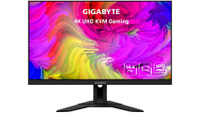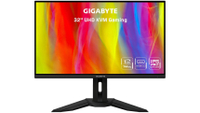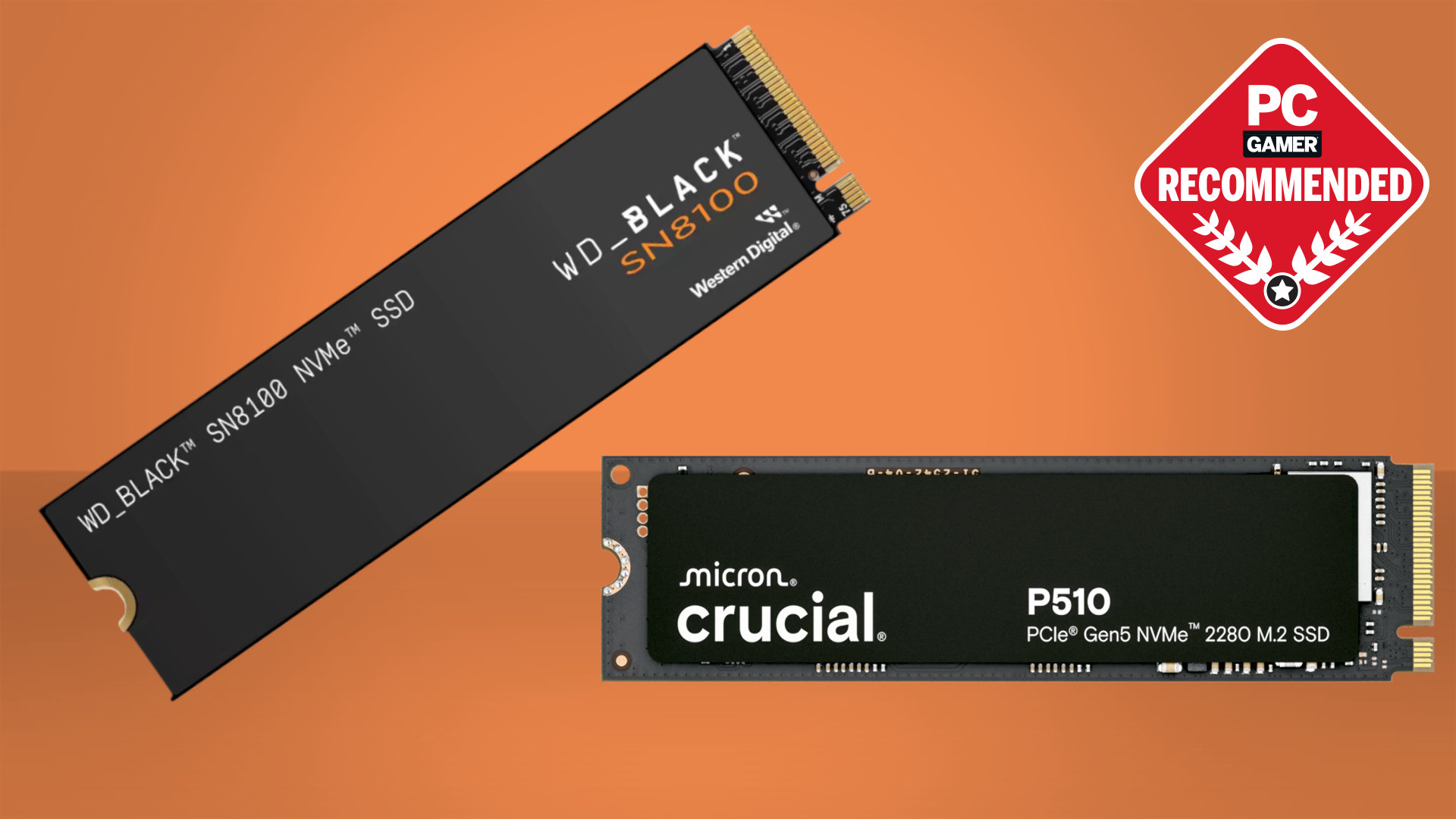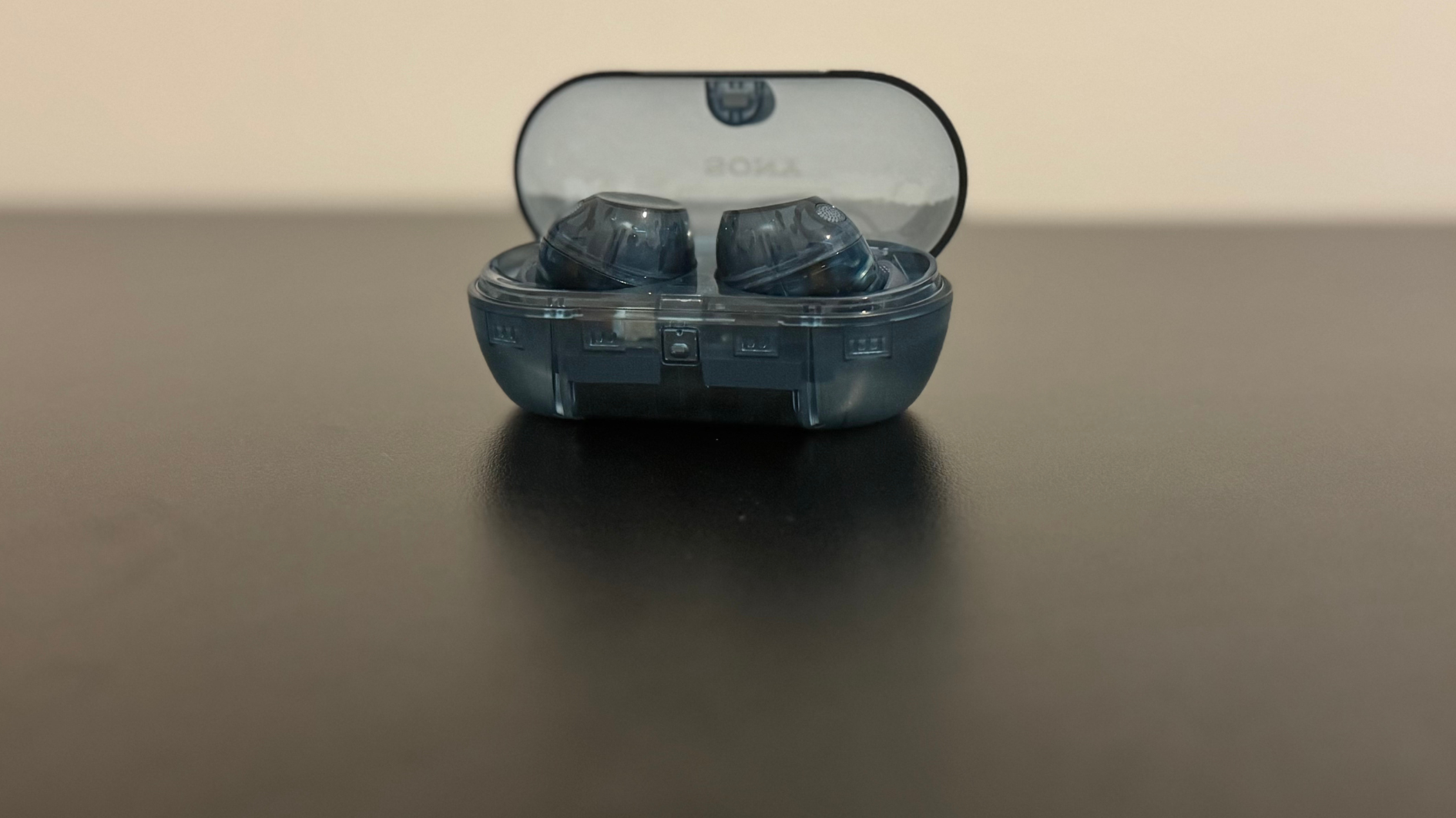The 4K 144Hz gaming monitor I happily use daily is on sale today for $580
Gigabyte's M28U makes for a great 4K monitor upgrade.

I'm using the Gigabyte M28U as I write this—I'm a big fan of its impressive IPS panel and 4K resolution. I've waxed lyrical on this monitor enough already in my review, but since it's currently sitting around the cheapest we've ever seen it over at Newegg—as one of its Memorial Day PC gaming deals—I thought I'd take a moment to explain why you might want to pick it up for yourself.
Essentially, it's a 28-inch 4K monitor with an excellent IPS panel for $580. That IPS technology makes sure color reproduction is accurate and there's a real depth and breadth to every frame. While the 4K bit makes for an immensely detailed gaming experience.
There's also a ton of real estate for windows and applications if you want this monitor for work and play, which is what I use it for. The 28-inch size is a little bit restrictive for 4K compared to some, and you'll probably want some Windows scaling to make text easily readable—in fact you will want some scaling—but the pixel pitch is high as a result of its compact size and that makes for a really crisp overall image.
It's also responsive, with a 1ms GtG speed able to keep up with that 144Hz refresh rate and retain an image which is nice and clear. I recommend that if you do pick this one up, stick to the Smart OD overdrive setting, rather than use the more intense overdrive options. Those can cause a little ghosting. FreeSync Premium Pro support helps keep most issues and tears from appearing on this monitor besides.
Gigabyte M28U | 28-inch | 4K | 144Hz | FreeSync Premium Pro | 1ms response time | $649.99 $579.99 at Newegg with coupon code MDSBS24344 (save $70)
This 4K gaming monitor looks stunning, runs fast, and comes with AMD FreeSync support to keep everything smooth and tear-free. It's a firm favourite of ours on team, and I'm using it to write this very deal block. I will say it doesn't come with the best stand for a gaming monitor, but it does at least offer a bit of adjustment. Regardless, it's a darn good gaming monitor at a good price.
This M28U is technically rated to DisplayHDR 400 standards, but with a general brightness of 300cd/m² that really doesn't mean much. That has to be this monitor's only major weak point, though the stand is also a bit basic.
Still, you get a great panel at a good price here, and one that I really recommend. It's a more affordable 4K panel than some, but it doesn't let up where it counts in terms of visual quality and fidelity. You really don't want to chase the 4K pixel count and sacrifice colour depth or clarity to get there—that largely defeats the point of the high resolution to begin with.
Gigabyte M32U | 32-inch | 4K | 144Hz | FreeSync Premium Pro | 1ms response time | $799.99 $749.99 at Newegg (save $50)
This is the larger version of the M28U and features much of the same stuff we love on the more compact model. 32-inches does make for a much more immersive experience, however, and that works a treat with the 4K resolution.
I also want to mention the M32U, which is a similar specification to the M28U but a little bigger. I have a similar model of Gigabyte 32-inch 4K monitor in for review, and I can say that the extra real estate of the 32-inch model is appreciated for immersive 4K and when I'm opening lots of windows in work. Ultimately, though, I have both 28-inch and 32-inch screens set to the same 150% Windows scaling, so I'm not gaining a whole lot from the extra few inches.
There's also not quite as much of a saving on the $750 M32U.
Keep up to date with the most important stories and the best deals, as picked by the PC Gamer team.

Jacob earned his first byline writing for his own tech blog. From there, he graduated to professionally breaking things as hardware writer at PCGamesN, and would go on to run the team as hardware editor. He joined PC Gamer's top staff as senior hardware editor before becoming managing editor of the hardware team, and you'll now find him reporting on the latest developments in the technology and gaming industries and testing the newest PC components.



